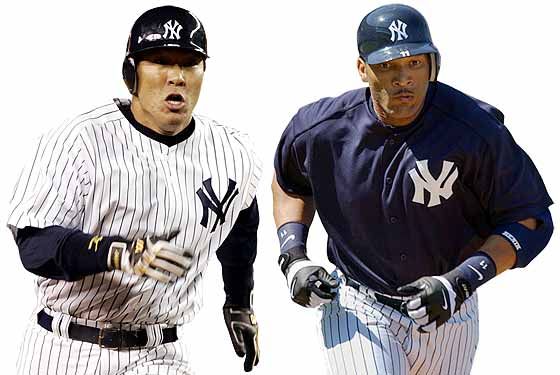
At 21, Victor Hu may be younger than the other pundits predicting a great 2006 Yankees season, but his track record in baseball prognostication is, so far, unassailable: As a Yankees intern at George Steinbrenner’s Tampa compound last summer, the Harvard JV second-baseman and applied-math and psychology major (who’s also working on a statistics master’s) advocated a potentially risky mid-season trade. His research showed a promising, previously undiscovered factor in Colorado Rockies starting pitcher Shawn Chacon’s inconsistent performance. His bosses agreed, and Chacon ended up a major contributor to the Yanks’ division title. A senior, Hu admits he was a bandwagon Red Sox fan until his extensive independent research into baseball-analysis problems caught the eye of Yankees brass when he sent in his résumé unsolicited; his hiring and the employment of a New York–based stathead named Michael Fishman mark a major foray into serious statistical analysis for the largely scouts-and-hunches Yanks front office, “though they’re certainly still much more heavily invested in traditional methods,” as Hu says. Hu is talking to several teams about post-graduation baseball-biz jobs, but he offered New York some gratis insights on the Yanks and Mets (both of whom he considers favorites to win their divisions).
Hideki Matsui, left field, Yankees
Gary Sheffield, right field, Yankees
“Matsui especially is often unrecognized for being a clutch player. Using the strict ‘close-and-late’ definition of ‘clutch’—seventh inning or later, down by one, tied, or up by one—they’re tremendous. Only a few players in the league hit 5 to 10 percent better in those situations than they do in non-clutch plate appearances. Matsui and Sheffield were two of them.”
Jason Giambi, first base, Yankees
“One interesting thing about Giambi is that, despite the fact that he may not be the fastest player on the team, he actually hits into far fewer double plays than average. Most players hit into double plays 10 to 13 percent of the time they have the opportunity (at least a runner on first, less than two outs). Giambi is only at 7.2 percent.”
Derek Jeter, shortstop, Yankees
“One of the many reasons he fits well in the two-hole is that he has one of the highest singles-per-plate-appearance rates on the team. Faster players have an advantage in front of singles because their speed allows them to take an extra base, which means batting Jeter behind speedy players, such as Johnny Damon, is particularly effective.”
Billy Wagner, closer, Mets
“He’s in his mid-thirties, but I think he’s going to be as good as he’s been in the past. He hasn’t pitched an inordinate amount of innings, so even at 34, there’s no reason to expect a huge decline. He never overextended himself or was overused.”
Carlos Beltran, center field, Mets
Johnny Damon, center field, Yankees
“Evaluating the total value of center-fielders over the last five years—it’s complicated, but mainly it’s calculating how many runs they’re adding on offense and how many runs they’re saving on defense—Carlos Beltran and Johnny Damon are both in the top five. Damon’s a tremendous bump up for the Yankees, and since getting him takes away an equal amount from the Red Sox, it’s twice as effective. And I have no doubt that Beltran will bounce back. Last year was well within the realm of natural variation.” Next: Extreme Architectural Makeovers in Glass